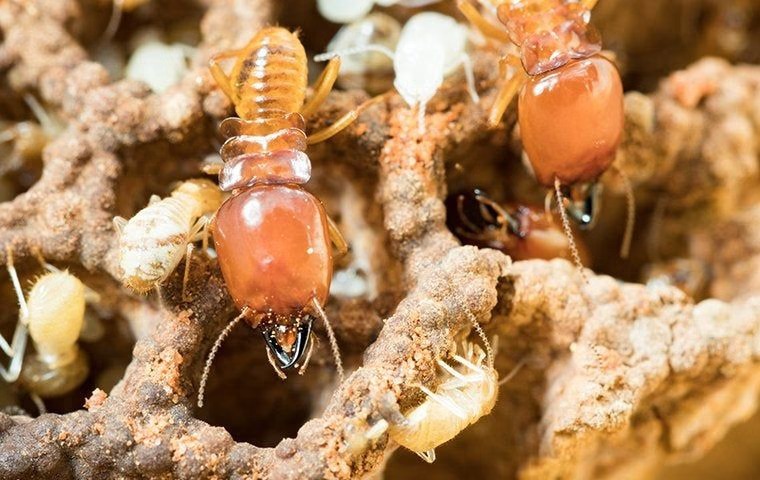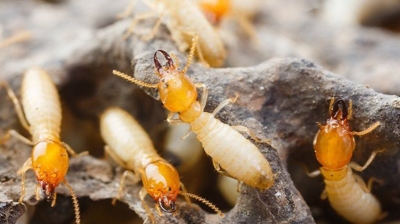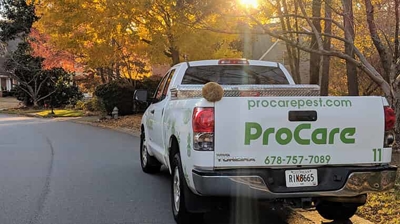
Termite Identification & Prevention

What You Need to Know about Termites in Georgia
Learning the basics about termites is vital if you call Georgia home. These pests live in large populations throughout our region and across the U.S., causing billions of dollars in damage each year. A professional home pest control technician can help you identify and control termites.
Frequently Asked Questions About Termites
Have questions? We are here to help. Still have questions or can't find the answer you need? Give us a call at 678-757-7089 today!
-
What are termites?
Adequate rainfall and warm temperatures make Georgia a place where termites want to live. The southern United States is where termites live in vast numbers. It isn't a matter of if termites will get into our homes in our region, but rather when!
Termites are social insects that live and work cooperatively in large groups. Subterranean termites are most common in Georgia and throughout the rest of the U.S. They nest underground, and the workers leave the nest each day to forage for food. Termites feed on the cellulose found in wood and other organic matter; the subterranean termite's preferred food source is wet or decaying wood.
-
Are termites dangerous?Termites pose the biggest threat to our structures. People rarely come into contact with termites, but structures invaded by these wood-eating pests are under daily attack. Termites cause more than five billion dollars in damage and prevention costs across the United States each year. If you think you don't need to guard your home against termites because your insurance company will take care of the repairs, think again! Most insurance companies view termite damage as preventable and won't cover repair costs.
-
Why do I have a termite problem?
Three things promote termite damage: wood, wood making contact with the ground, and moisture. Properties with fallen trees, old wooden fences, woodpiles, logs, or outbuildings in decay provide termites with reliable food sources they can't pass up. Pieces of wood making direct contact with the ground like deck posts, wood shingles, and porch steps offer termites easy entry and exit points.
Since subterranean termites have high moisture needs and prefer to feed on wet or decaying wood, leaky pipes, poor ventilation, gaps around windows, roof damage, and damage to siding will create moisture issues that attract termites.
-
Where will I find termites?
Subterranean termites nest underground in damp soil. Workers move through the ground or inside mud tubes to their foraging sites without much notice. Unlike ants or other insects, you won't see them trailing across your lawn, through gardens, or on the surface of decks.
Termites like to feed on structural wood hidden behind walls, siding, wood trim, and under floors inside our homes. Since moisture is key to a termite's survival, wood near windows, doors, sinks, and tubs is most likely to be invaded by hungry termites.

Stay In The Know
-
 How to Tell If There’s Wildlife Activity in Your Home (and What to Do About It)Read More
How to Tell If There’s Wildlife Activity in Your Home (and What to Do About It)Read More -
 Keep Your Atlanta Home Fly-Free: How Procare Manages House Flies, Fruit Flies, and Other Nuisance FliesRead More
Keep Your Atlanta Home Fly-Free: How Procare Manages House Flies, Fruit Flies, and Other Nuisance FliesRead More -
 DIY pest control?Read More
DIY pest control?Read More -
 Procare: The Best Pest Control Solutions for Atlanta BusinessesRead More
Procare: The Best Pest Control Solutions for Atlanta BusinessesRead More -
 3 Signs You Might Have a Termite Problem in Atlanta—and How to Spot Them EarlyRead More
3 Signs You Might Have a Termite Problem in Atlanta—and How to Spot Them EarlyRead More -
 Your Year-Round Defense Against Fall Bugs and Joro Spiders in AtlantaRead More
Your Year-Round Defense Against Fall Bugs and Joro Spiders in AtlantaRead More -
 How To Solve Any Fall Pest issue in 2024Read More
How To Solve Any Fall Pest issue in 2024Read More -
 Keeping Spiders Out Of Your HomeRead More
Keeping Spiders Out Of Your HomeRead More









